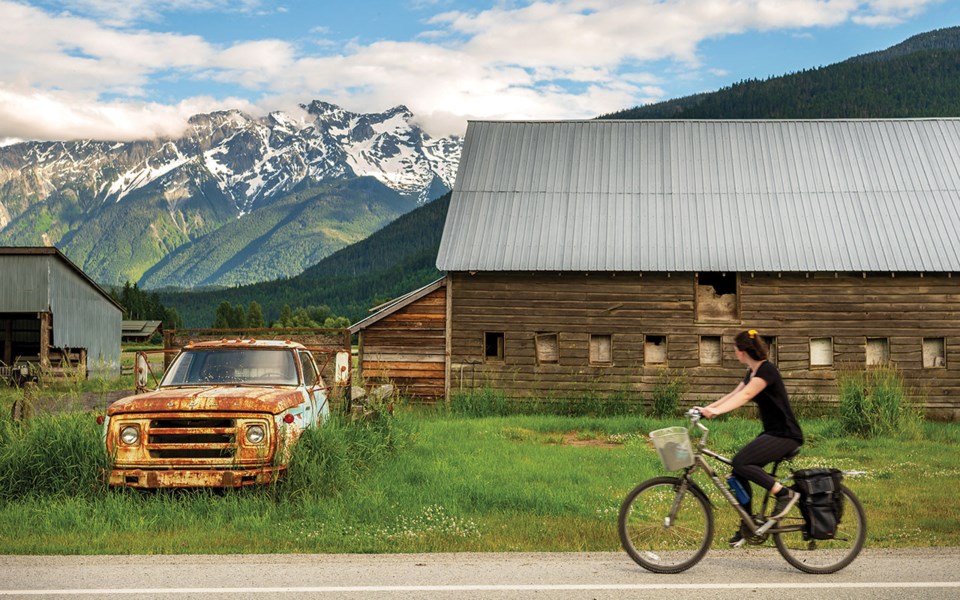One line stuck with me from my recent interview with Whistler council candidate Gabriel Pliska. He basically said, “We need to focus on the future of Whistler and think about what kind of community we want to see by 2050.”
I think Pliska is right. While 2050 might sound like a faraway year, it is coming upon us sooner than we think.
In 2050, Whistler will be coming on its 75th anniversary as a resort municipality, Pemberton will turn 95, and little old Lillooet will pass its 104th birthday.
This coming municipal election cycle offers candidates and the community a chance to voice where they want to see the region go in the next two decades.
With the recent Balance Model Initiative report by the Rresort Municipality of Whistler and new climate modelling projections, we have been given a glimpse into what the future of Whistler could potentially look like by 2050.
The Balance Model projects Whistler will have a busier future, filled with nearly twice the current population, twice the current congestion on Highway 99, and a housing crisis that will only worsen.
The climate projections also paint a dire situation with increased warming, droughts and a shorter ski season. A dryer, hotter Whistler could mean wildfires in the valley, a thought I dread to imagine.
Unless action is rapidly taken to address these projections, Whistler's future could be much less livable.
While the Balance Model just looked at Whistler’s potential future, I have a strong feeling these trend lines for Whistler are something the entire Squamish-Lillooet Regional District (SLRD) will continue to experience.
If the SLRD municipalities continue to grow at the same rate they did between the 2016 and 2021 censuses, we are talking about Pemberton having a population of 18,321 by 2051, Whistler with 37,612 and Squamish at 78,808.
Right now, it’s hard to imagine the ‘City of Pemberton,' but as new neighbourhoods continue to be built up the hillsides and the number of townhomes grows in the Village, the idea becomes easier to imagine with each passing day.
Memories of the tiny village of 800 people in the Spud Valley, built mainly for farming and logging, begin to fade as development encroaches and the lines between Mount Currie and Pemberton become increasingly blurred with each new housing project.
If the Sea to Sky continues at this level of growth, it won’t just stop at the municipal boundaries. The surrounding regions will also grow. Be it WedgeWoods, Britannia Bay, or even the Bridge River Valley.
We already have an idea of where the growth will be. In Electoral Area D, for example, The Tigerbay Development Corp.'s ‘South Britannia’ housing development, located south of Britannia Bay, is currently in the rezoning application process with the SLRD, which could see between 1,000 and 1,500 units built in the region south of Squamish.
In Whistler, the Nordic and Glacier 8 housing developments have been approved, while the ambitious Northlands development on the outskirts of the village is currently going through an advanced zoning process. These projects alone could provide well over 1,000 new bed units in Whistler.
While the Balance Model predicts a few slower years of growth over the next two decades for Whistler, the trends for this region will likely stay the same. Tourism will likely continue to grow, driving a need for employees, and with the region providing ample employment, people will continue to come.
Over the next two decades, the province projects that it will grow by more than 1.3 million people, with the vast majority coming to the southern part of the province, including the Sea to Sky.
Dealing with this growth is a herculean task, and I greatly respect our elected representatives at all levels of government for tackling this issue. There is no easy way of dealing with it.
Every policy decision can come with backlash as you try and balance the need for more housing and infrastructure against the desire of residents to keep things the way they are.
As the region continues to grow, conversations need to be had about what that growth looks like long term. If we are heading toward the future of a city in the mountains, what does that look like?
This municipal election cycle is a chance for all residents in the SLRD electoral areas and municipalities to decide on the region's future and plan accordingly.
You can find more information about running to become an electoral area representative here.





